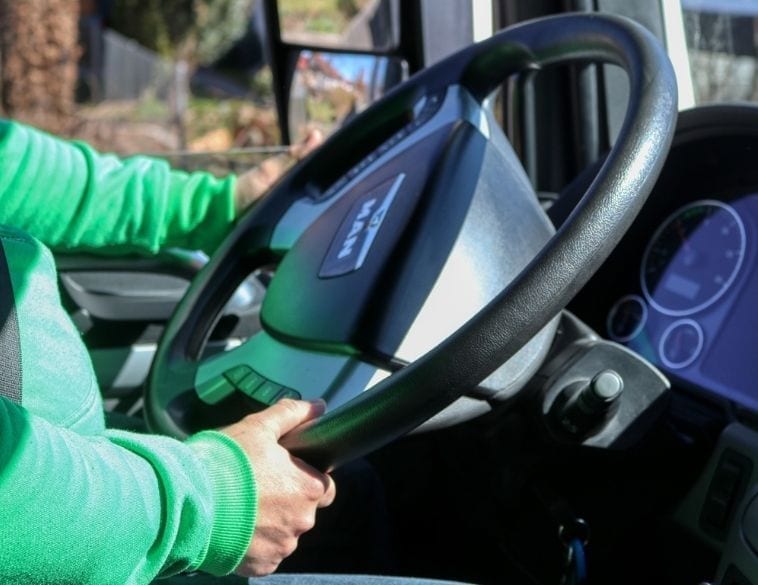At NAFA’s recent virtual exhibition 2020, Arthur Liggio, President and CEO of Driving Dynamics, offered a webinar on driving safety culture.
Virtual, yes, but…
For fleet managers, the technology to automate the process of responding to poor driving behaviour has become a reality. However, it must be recognized that a virtual approach is mostly about short-term change because it focuses only on the deviations of the key participant in the process: the driver.
According to Liggio, it would be preferable to use the data collected to better integrate the main person involved in the process in order to eliminate these irritants once and for all. To support his philosophy, the expert proposes a strategy through a webinar.
A question of culture
“Is the emphasis on monitoring actions sufficient?” asks Liggio. In his view, there is a better way, and it involves a personalized approach that leads the driver to become more aware of their driving behaviour. In this way, the manager changes the paradigm and sees the driver as the solution, not the problem. In other words, the employer exploits the virtual data related to the driver’s risks, not by using it to reprimand the driver but as a basis for building a new safety culture.
It is well known that every day, drivers are confronted with potential obstacles such as traffic signs, speed limits, traffic lights, rush-hour traffic and communications technology to manage.
“For the majority of drivers who experience few or no incidents, the fact that everything is going well forces them to push a little, then a little more. Ultimately, they create other habits that can be defined as risky behaviours,” explains the expert.
It has to be since the statistics put forward by Mr. Liggio reveal that, over the years, drivers have been the main risk factor in terms of traffic accidents. In fact, they have accounted for an average of 94% of the fatal pie over the last decade.
Tactics
Nevertheless, resolving the issue remains a challenge, as security issues are often tangible. Arthur Liggio suggests going to the root of the driver’s convictions to strike a positive and lasting emotional chord. He states that every action we take is influenced by our beliefs. Therefore, the employer’s approach is to change the label of the driver from “incompetent unconscious” to “competent conscious”, as Liggio calls it.
This is the scenario put forward in this presentation, but any manager can adapt it to his or her reality. After observing the facts to be corrected, the strategy consists of four steps: diagnosis, understanding, agreement and action plan.
The diagnosis is established in light of the driving record. The employer asks his driver to complete the document containing “all” his violations of the Highway Traffic Act and then to sign it. The driver then signs it, omitting to add a lapse of attention during his vacation itinerary. The manager reminds the driver of this error by pointing the word “all” prominently at the head of the document to be signed.
“But it happened during my family vacation,” he explains.
“But could it be that you overlooked something in the document that asked you to report all your traffic violations?”
“I admit I missed that detail,” the employee confesses, adding that sometimes he can be distracted while driving for a variety of reasons. This is the second step, awareness.
“Fine, even though I know these violations are unintentional, can we talk about it a little bit?”
As the conversation progresses, the employee admits that he or she may gain insight. He points out that there is room for improvement for his safety and that of his family, to improve his driving record and, ultimately, to preserve the company’s reputation. Without judgment, through an empathetic exchange of open-ended questions from the entrepreneur, the two men reach stage three, the agreement.
The action plan
“Now, why not make a plan that suits you personally to ensure YOUR safety? “says the manager.
Continuing in the same human and understanding vein, the manager gives the driver a document and suggests that he or she write down all the points that he or she would like to improve: stress, attractions and distractions, emotional control, physical and mental preparation, route planning, etc. Once again, the driver’s involvement is at his or her own initiative. This makes him a self-taught driver, an important player in the evolution of the company’s safety culture. To fine-tune the file, the duo meets on a weekly basis and makes the necessary adjustments.
Finally, in order to complete the file after a period of time, they deem appropriate, the employer submits a “before” and “after” worksheet, indicating the progress demonstrated by the driver during the exercise.
“Through this method, any company becomes aware of the evolution of its drivers’ skills through a listening process based on a personalized approach,” says Liggio.
From “incompetent unconscious”, the driver has thus moved from “incompetent unconscious” to “competent conscious” at his or her own pace, according to his or her determination and ambitions.
“He knows more and more what’s going on and becomes truly aware of the elements that affect his profession on a daily basis,” concludes the president of Driving Dynamics.



